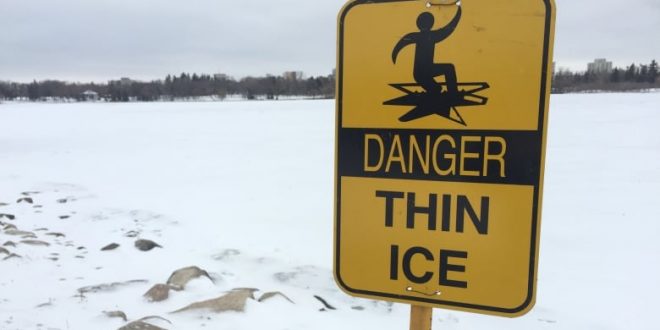With the recent snowfall and dropping temperatures, Indiana Conservation Officers advise being mindful of the potential hazards of frozen lakes, ponds, rivers and streams.
It’s also important to keep a watchful eye on neighborhood retention ponds, lakes and other waterways for others who may venture out and find themselves in trouble.
Every winter, thousands of Hoosiers safely enjoy fishing, skating, hiking, or just sliding around on frozen ponds and lakes. And every year, people drown after falling through ice.
Just like driving differently on snow versus clear roads, some may need to re-learn how to safely have fun on ice.
Put safety first. The best rule of thumb is, when thinking about getting on the ice, believe it is thin ice unless proven otherwise.
Here are a few tips to remember when considering standing on or walking on a frozen lake or pond:
- No ice is safe ice.
- Test the thickness of the ice with an ice auger. At least 4 inches of ice is recommended for ice fishing; 5 inches is recommended for snowmobiling.
- If you don’t know the thickness of the ice, don‘t go on it.
- Wear life jackets or flotation coats.
- Carry ice hooks and rope gear.
- Before going on the ice, leave a note of your whereabouts with a friend or family member.
- Don’t test the thickness of the ice while alone.
Wearing a life jacket is especially important when on the ice. If you fall through, a life jacket will keep your head above the water until help arrives.
The coating of snow that Indiana just received can make for treacherous ice conditions. The snow can insulate the ice, causing it to freeze at a slower rate. When snow and rain freeze into ice, it is never as strong as solid, clear ice.
If you see a pet or other animal in distress on the ice, do not go after it. Doing so can often end in tragedy. Instead, contact your local emergency response personnel, who are equipped to make a rescue.
Some bodies of water will appear to be frozen solid but actually can have thin ice in several potentially unexpected areas. Flowing water, such as rivers and streams, should be avoided when covered by a layer of ice. Water that is surrounded by sand may freeze with inconsistencies in the thickness of the ice.
Underground springs, wind, waterfowl and other animals can also keep areas of ice thin.






